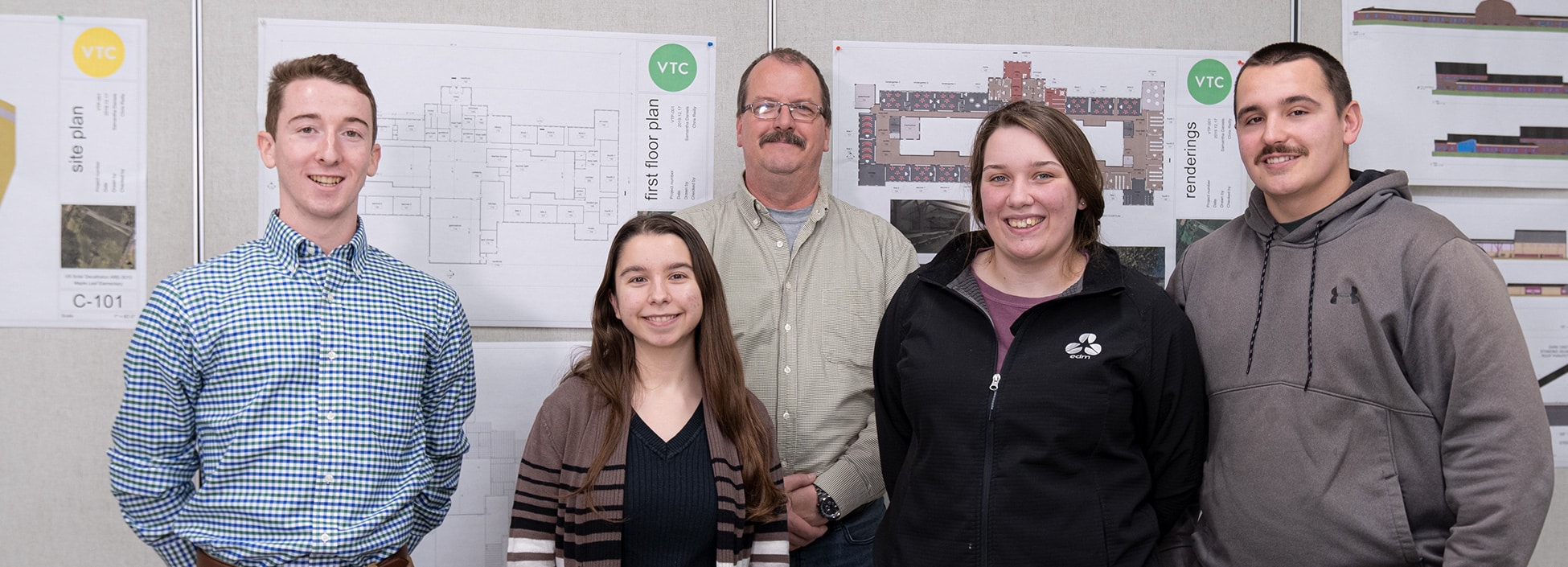What’s so intimidating about the U.S. Department of Energy’s Solar Decathlon Design Challenge? Is it the expert judges, representing the brightest minds in sustainability, scrutinizing the work? Or the competitors from fifty-five collegiate institutions, including the University of Brazil, Alexandria University, and the Massachusetts Institute of Technology?
Not at all. At least, not if you’re one of the five Vermont Tech students with their sights set on winning the 2020 decathlon.
“This started as part of our Design Integration class and we’ve been really motivated,” said Samantha Daniels, the architectural designer on the team, “We’re the first students from Vermont Tech to enter the Solar Decathlon!”
Samantha Daniels, Coleton Loura-Bumps, Jeff Hobbs, Jacob Beaulieu, and Olivia Mendes Machado are the BS in Architectual Engineering Technology students rising to the occasion. What’s their plan? With guidance from team leader and professor Chris Reilly, PE, “they are designing a zero-energy elementary school, Maple Leaf Elementary, in Williston Vermont.
The team is open about their approach to sustainability — the core concept of the challenge, “Some teams are focused on being ‘green’ right now — we’re focused on resilience and sustainability for the next couple hundred years,” Daniels said.
They divided the project’s design responsibilities, with Daniels as architectural designer, Bumps and Hobbs as mechanical designers, Beaulieu as electrical designer, and Machado as electrical and architectural designer.
The school’s design was inspired by maple leaves, with a primary core forming the center of the one-story structure and branching halls on either side. Security was another factor the team took to heart, emphasizing a design pattern that would maximize safety in the event of an intruder.
“We considered how the kids were going to move through the halls, multiple safety-criteria, and all the codes that apply (to an elementary facility),” Daniels said.
From the electrical equipment, building materials, ventilation, insulation, and rooftop solar panels, they are determined to hit the mark and deliver a winning design. The team is spending the next few months applying finishing touches, building the reports, and preparing the presentation. If chosen as finalists, they will fly to Colorado to present their design live at the U.S. Department of Energy’s Solar Decathlon in April, at the National Renewable Energy Laboratories (NREL).
An opportunity they’re working hard to attain.
Thanks to the help and support of Professor Reilly and Vermont Tech, the students feel proud, confident, and prepared to represent the Architectural Engineering Technology program, and lead the future of innovative design.
